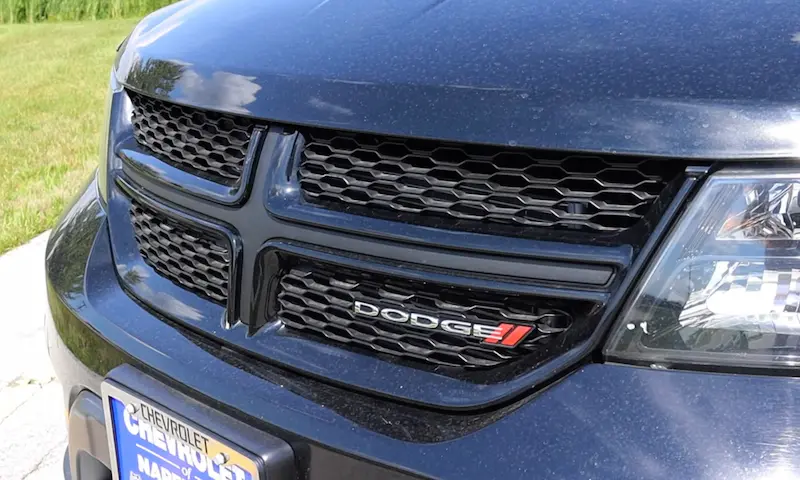When a service electronic throttle control warning comes up on your Dodge Ram 1500, it shows something is wrong with the vehicle throttle system. Most vehicles are shifting from the mechanical throttle to the electric throttle. This shift comes with many advantages, but the electronic throttle control has its own downside.
The electronic throttle relies heavily on the flow of electric current. Anything electrical issues could affect the proper working condition of the throttle system. Also, the sensor could affect the electronic throttle system and trigger a warning message.
What is a Ram 1500 Service Electronic Throttle Control?
A service electronic throttle control is a warning message that notifies the driver of something wrong with the throttle system in your Ram 1500. The warning message is associated with Electronic Throttle Control (ETC) vehicles.
What is Electronic Throttle Control (ETC)? The electronic throttle control system calculates the engine’s torque and then uses it to regulate how much power the wheels get.
The ETC can function by electronically linking the accelerator to the throttle. It replaces the old use of mechanical linkage and does not allow for power loss due to resistance from changes in speed or weight during acceleration.
In addition, the ETC system uses an electric motor to change (open or close) the throttle valve position. It does this with the help of software that sends signals to the electric motor, which then controls the throttle valve.
A useful sensor in the ETC working process is the throttle position sensor which reads how far the throttle valve is open. The system uses the data collected by the sensor to make necessary adjustments to the throttle valve.
When the ETC’s sensor, electronic motor, or other internal components are damaged, the “service electronic throttle control” warning message will appear.
These components’ damage will also come with various symptoms affecting driving conditions.
Symptoms of Ram 1500 Service Electronic Throttle Control
When the warning message “service electronic throttle control” comes, it may come with other symptoms. These symptoms are usually very serious and can lower driving conditions.
Some of the symptoms of “service electronic throttle control” warning messages include the following.
- Engine idling
- Rough idling
- Hesitation when accelerating
- A drop in engine performance
- Throttle warning light
- Poor fuel economy
- Disturbing noise coming from the throttle body
- Jerking and bucking during acceleration
- Sudden increase in speed when driving.
- Check the engine light
What are the causes of a Ram 1500 Service Electronic Throttle Control?
Below are some causes of a “service electronic throttle control” warning message in a Ram 1500.
1. Damaged electric motor
The electronic motor is one of the most important components in an ETC system. When it is damaged, there is no way the ETC system can control the throttle valve.
Furthermore, the ETC controls the flow of air or fuel going into the engine by sending signals to the electric motor. The electric motor then either closes or opens the throttle valve.
When the electric motor is damaged, the valve will get stuck in a position. It will not allow the vehicle to have proper acceleration and will affect engine performance. Also, the warning message “service electronic throttle control” will come up.
2. Damaged throttle position sensor
When the throttle position sensor is damaged, there is no way the vehicle’s computer system will be able to get information about the throttle valve position. Also, the ETC will not be able to send signals to the electric motors because there is no information on the actual position of the throttle valve.
3. Wiring problem
The ETC system is electronic and requires an electric current to work. The wire connection allows current to flow to the system. When the wire is damaged, the ETC system cannot receive current and will not function.
4. Failing throttle valve
A stuck throttle valve is another cause of the “service electronic throttle control” warning message. Many factors could cause the throttle valve to get stuck.
One factor that can cause a throttle valve to get stuck is dirt. When dirt accumulates in the throttle valve, it is very difficult for the throttle valve to move freely.
Also, issues with the electric motor could cause the throttle valve to stay closed or open. The motor controls the throttle valve and is responsible for opening and closing the valve.
Other issues like electrical problems could also cause the throttle valve to be stuck on open or closed. If the throttle is stuck, the ETC system will not function properly, triggering the warning message.
5. Failing ETC or engine computer
The ETC system and the engine computer system are both responsible for controlling the throttle system. The ECM collects information from the throttle position sensors and other sensors.
Once the engine computer system receives the information, it signals to the ETC system, which carries out throttle action.
When any computer system or the ETC system is damaged, the throttle or acceleration of the vehicle will be affected.
How to Clear Ram 1500 Service Electronic Throttle Control
The first step to fixing a “service electronic throttle control” warning message is to find out the cause of the warning. As we have seen above, the warning message has many causes, making diagnosis tricky.
There are some ways you can carry out a diagnosis; you could use an OBD2 scan tool or physically inspect the related parts of the ETC.
Below are ways to fix a “service electronic throttle control” warning message.
1. Replace the damaged electric motor
Use an OBD scan tool to check if the electric motor is still functioning. You can run certain tests on the electric motor that will help you confirm if it is working properly.
Once you can confirm that the motor is not working, locate the engine. You can use the owner’s manual to make things easy.
Remove the electric motor once located and replace it with a new one.
2. Check and change the damaged throttle position sensor
Also, you can run a test on the throttle position sensor using an OBD scan tool. The test will tell you if the sensor is available or not.
If the test shows that the sensor is not available, then the sensor may be bad. Find the sensor, then examine it and wire connections for any obvious damages.
Also, note that a dirty sensor could cause the ETC system not to work. Clean the sensor and install it back into position if there are no obvious damages.
Any damages found on the sensors means it is due for a change. Ensure to change the sensor with the right type of sensor.
3. Replace the failing valve
Internal components of the ETC system should be left to someone with more mechanical knowledge. If you lack mechanical knowledge, you should take your vehicle to an expert for a proper fix.
4. Check and change the damaged wires
The owner’s manual contains a diagram of all the wiring connections in the vehicle. Using the manual, locate the wiring connection associated with the ETC system.
Once the wiring is located, inspect for damages like broken or exposed wire and corrosion. If any damage is found, change the wire immediately.
5. Failing ETC or computer system fix
If you have a failing ETC or engine computer system, it could be a simple malfunction. Try resetting the system using an OBD scan tool, or you can disconnect the battery for a while.
If resetting does not fix the problem, it could be a software issue or a damaged module. Take your vehicle to an expert to have problems like this solved.
Final thoughts
If you lack proper electrical or mechanical knowledge, do not attempt to fix the problem. Solving a “service electronic throttle control” warning message could be tricky. It is best to have the issue given to an expert for proper diagnosis and repair.















